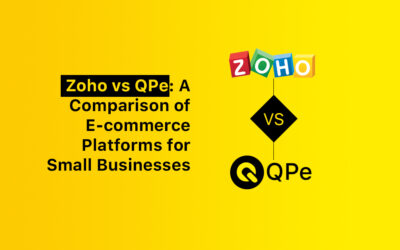These days, it’s easier than ever to open a web store. Many business owners choose Shopify, but it’s not always the best choice for every small business. Many business owners look at other choices because of the high costs of subscriptions, extra transaction fees, and limited customization. It is very important to look into the Shopify alternatives 2025 if you want to find a platform that fits your needs, your price, and your location.
In this blog, we’ll show you the 10 best platforms that can be used as Shopify alternatives 2025. Each has its own strengths that make it better for different types of businesses and kinds of businesses.
Why Look Beyond Shopify in 2025
In the past few years, the e-commerce business has changed a lot. More and more customers want personalized shopping experiences, quick payment choices, and designs that work best on mobile devices. This means that business owners need platforms that are both cheap and flexible.
Some of the main reasons business owners look for Shopify alternatives for small business are:
- Pricing plans that fit tight budgets
- More customization and plugin options
- Better support for local payment methods
- A presence in more regions and better customer service
- Easy for founders who aren’t tech-savvy to use
These factors form the basis of our evaluation of the best ecommerce platforms 2025.
The Top 10 Shopify Alternatives 2025
In 2025, these are the sites that you should pay attention to.
1. WooCommerce
One of the most famous e-commerce platforms in the world is still WooCommerce, which was created on WordPress. Since it’s open source and easy to change, it’s great for businesses that already have WordPress sites.
Why choose WooCommerce
- It’s free to install, but you can buy add-ons for more advanced features
- It has a huge library of plugins and themes
- You have full control over hosting and scaling
Drawbacks
- It requires more technical know-how than hosted solutions
- The store owner is responsible for protection and maintenance
2. BigCommerce
BigCommerce is a strong cloud-based platform that is made to grow with your business. It’s perfect for companies that want to grow quickly and need SEO tools that are already built in.
Why choose BigCommerce
- It has great SEO tools
- No extra transaction fees
- The ability to sell on Amazon, eBay, and social media
Drawbacks
- As sales go up, prices go up
- There are fewer themes than on other sites
3. Wix eCommerce
Wix began as a website builder but has since grown into a complete e-commerce tool. It works great for small businesses and creative people who want to show off their goods in a beautiful way.
Why choose Wix
- Its drag-and-drop builder is great for beginners
- Its plans are cheaper than Shopify’s
- It has marketing tools built in
Drawbacks
- It’s not very flexible for very big stores
- It doesn’t have many advanced e-commerce features
4. Squarespace
A lot of people know Squarespace for its clean themes and focus on design. It’s great for small businesses that want their online store to look great without having to do a lot of complicated code.
Why choose Squarespace
- Modern, professional templates
- Simple enough for beginners to use
- Comes with writing and marketing tools
Drawbacks
- It doesn’t have as many features as some competitors
- It doesn’t work with all payment gateways
5. Magento (Adobe Commerce)
A free and open source shopping cart system called Magento is owned by Adobe. It’s powerful and flexible, but it works best for companies that know a lot about technology or have the money to pay for developer help.
Why choose Magento
- You can change everything about it
- Strong community support
- Easy to use with big stores and lots of visitors
Drawbacks
- It’s harder to learn
- It costs more for hosting and protection
6. Ecwid
You can use Ecwid to turn any website into an online store. The app is small, simple to use, and ideal for companies that need to quickly add shopping features.
Why choose Ecwid
- It works with WordPress, Wix, and other sites
- Supports multiple languages and currencies
- Small shops can get a free plan
Drawbacks
- It’s not as customizable as WooCommerce
- More advanced features need more expensive plans
7. OpenCart
Another open-source choice that is affordable and flexible is OpenCart. Small and medium-sized businesses all over the world use it a lot.
Why choose OpenCart
- It’s free to use and has a store with lots of add-ons
- Simple method for managing products
- Busy global community
Drawbacks
- You need to know how to use technology
- Some apps can be pricey
8. Shift4Shop
Shift4Shop is a dependable managed e-commerce platform that focuses on value by including a lot of features in its price.
Why choose Shift4Shop
- It has built-in SEO and marketing tools
- There are no transaction fees
- It has hundreds of features that don’t need add-ons
Drawbacks
- The user interface can look and feel old
- Customer service varies by area
9. StoreHippo
StoreHippo is made for both international and Indian markets, which makes it a great Shopify alternative in India. It has multi-seller platform features and enterprise-level e-commerce tools.
Why choose StoreHippo
- Works with many currencies and languages
- Strong B2B and B2C features
- Payment platforms that are based in your country
Drawbacks
- Plans can be pricey for new businesses
- Customization might need technical help
10. QPe
QPe has become one of the most potential and affordable Shopify competitors to Shopify in the Indian market. It’s made to make it easy for creators and small businesses to start, run, and grow online stores.
Why choose QPe
- Designed for Indian small business owners
- Easy integration with famous Indian payment gateways
- Dashboard that is easy to use and designed with mobile first
- Prices that are lower than global competitors
Drawbacks
- It’s still building an international footprint compared to Shopify or WooCommerce
- Some advanced integrations are still being worked on
Comparison at a Glance
| Platform | Best For | Pricing | Ease of Use | Scalability |
| WooCommerce | WordPress users | Free + add-ons | Moderate | High |
| BigCommerce | Growing businesses | From $29/month | Easy | High |
| Wix | Beginners and creatives | From $23/month | Very Easy | Medium |
| Squarespace | Design-focused stores | From $27/month | Easy | Medium |
| Magento | Large and custom stores | Free (open source) | Hard | Very High |
| Ecwid | Adding ecommerce to sites | Free + plans | Very Easy | Medium |
| OpenCart | Flexible, open-source use | Free | Moderate | Medium |
| Shift4Shop | Feature-rich hosted stores | Free with processing | Easy | High |
| StoreHippo | Indian and global sellers | From ₹1000/month | Easy | High |
| QPe | Small businesses in India | Affordable plans | Very Easy | High |
How to Pick the Best Platform
Knowing your goals, your level of technical knowledge, and your target market will help you choose the best e-commerce platform. If you want to be in charge, WooCommerce or Magento might be a good choice. Squarespace or Wix are good options for businesses who are interested in design. If you want to reach Indian customers, you should really think about options like StoreHippo or QPe.
QPe is the best choice for small businesses that want something simple, cheap, and with help in their area. Visit https://www.goqpe.com/ to learn more about its features and benefits, or look around the app itself.
In conclusion
There isn’t a single e-commerce option that works for everyone. When it comes to business, Shopify is strong, but it’s not always the best choice for everyone. By looking into the Shopify alternatives 2025, you can be sure to find a platform that works for your customers, fits your budget, and helps your business grow.
The platforms on this list give you a lot of good choices, whether you care most about price, design, scalability, or local help. For Indian small businesses in particular, QPe offers a modern and affordable way to open and grow online stores with trust.



